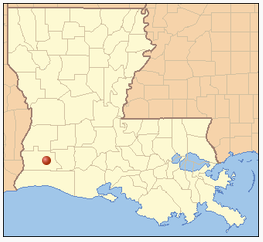| Home | Search | Emissions | Pollutants | About the Database |

CITGO Petroleum (1250), Lake Charles
LDEQ Accident Report
| Accident # | 88679 |
| State Police # | 06-03858 |
| Accident Date | 2006-06-19 |
| Report Date | 2006-09-12 |
| Follow-up Date | 0000-00-00 |
| Follow-up: | Yes |
Pollutants Released
| Pollutant | Duration | Point Source | Greenhouse Gas | Criteria Pollutant | Ozone forming chemical | Amount of Release |
| Sulfur Dioxide | 230 h | B-12 flare, wastewater treatment plant | NO | YES | NO | 203,217.0 pounds |
| Benzene | 230 h | B-12 flare, wastewater treatment plant | NO | NO | YES | 7,863.0 pounds |
| Toluene | 230 h | B-12 flare, wastewater treatment plant | NO | NO | NO | 51,003.0 pounds |
| Xylene | 230 h | B-12 flare, wastewater treatment plant | NO | NO | NO | 91,154.0 pounds |
| Ethylbenzene | 230 h | B-12 flare, wastewater treatment plant | NO | NO | YES | 15,408.0 pounds |
| Oil | 230 h | B-12 flare, wastewater treatment plant | NO | NO | NO | 2,226,000.0 gallons |
Accident Classified As:
Cause of Problem: Weather
Refinery experienced a heavy rainfall event, greater than 8 inches;of rain in 36 hours. 250 psig steam lines became submerged in water and as a result the steam condensed and caused a drop in pressure, eventually stopping the flow of rich amine throughthe Central Amine unit. This resulted in the loss of acid gas production. The SROs eventually shutdown due to lack of feed. Off gas went to the B-12 flare. Rainfall runoff exceeded the available capacity of the wastewater treatment system storm water tanks and the treatment system. When the capacity of the storm water tanks was exceeded, slop oil and wastewater overflowed from the tanks into the protective dike area surrounding the tanks allowing evaporation of benzene, etc.
Discharge Preventable - Yes
Notes/Remedial Actions
The lack of amine treatment of refinery fuel gas caused the hydrogen sulfide content in fuel gas to exceed permit limits Hydrogen Sulfide amounts exceeded not reportedÉTo increase the pressure of the steam system and to reuce hydrogen sulfide generation, emergency steam and hydrogen sulfide shedding steps were initiated. Several units feed rates were reduced to minimum and some were shut down. As soon as acid gas was available steps were taken to restart the SRUs. For each restart operations pnnel followed standard operations procedures for startup and shutdown. When the storm water tanks began to overflow, steps were taken to remove slop oil from the tank dike using vacuum dikes. The feed rte of wastewater from the wastewater tanks to

Connect With Us: